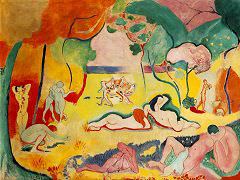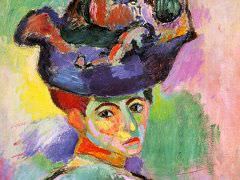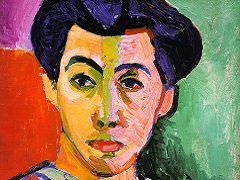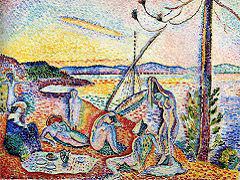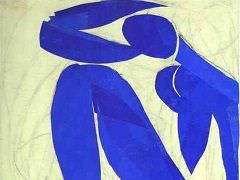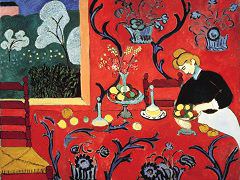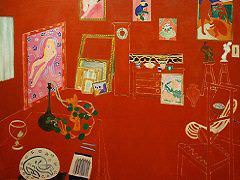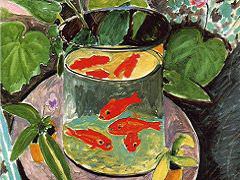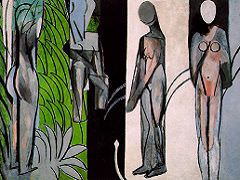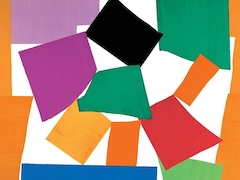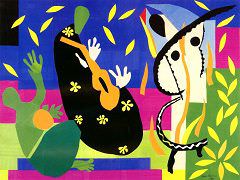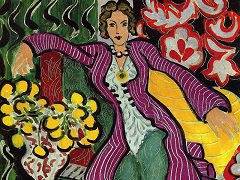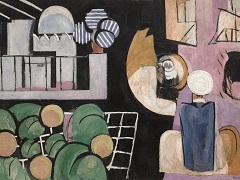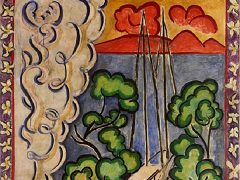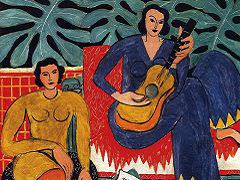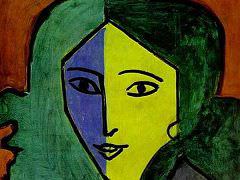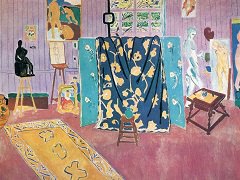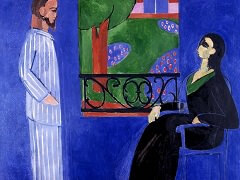Studio Interior by Henri Matisse
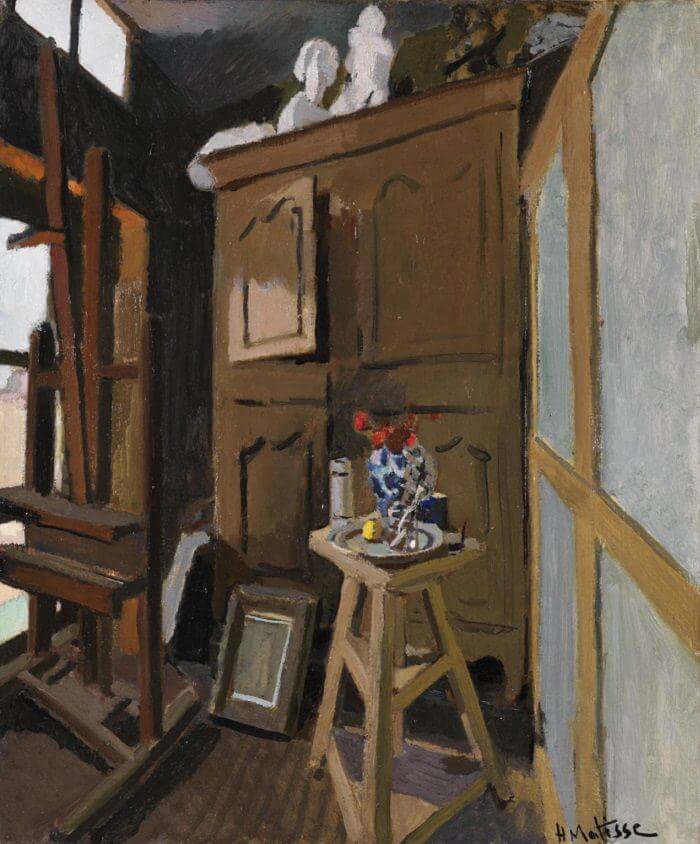
This painting shows a corner of Matisse's apartment at 19 Quai St. Michel, Paris, where he lived from 1899 to 1907. The subjects of domestic interiors and still-lifes (in this painting a carefully arranged still-life of a vase of flowers, jugs, a glass containing a long spoon and a lemon on the small stand in the foreground) were typical of Matisse's works of around the turn of the century. Matisse attended life drawing and sculpture classes from 1899 to 1904 and much of his work in this period focuses on subject matter arising from his studio practice.
Studio Interior has traditionally been dated c.1899-1900. Christian Zervos, editor of Cahiers d'Art, identified the work in 1931 as having been painted in 1899 and claimed that it was Matisse's most characteristic work of that year. Zervos drew comparisons between this work and the painting of Paul Cezanne, whose Three Bathers, Matisse acquired in 1899. Although Zervos most likely based his article on information given to him by Matisse, the artist's memory may not have been reliable some thirty years after the event. The presence of the sculpture casts, which were Matisse's own, in this painting makes the date 1899 improbable. Matisse began to attend sculpture classes at the �cole municipale de la Ville de Paris about 1899-1900 and he usually worked on his pieces for a length of time, in some cases over a period of years, before bringing them home. The cast which can be identified with the most confidence is the second on the left, which appears to be that for Bust of a Woman, cast in bronze in 1900.

